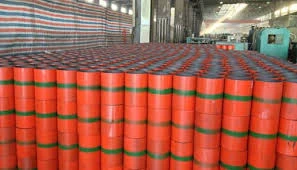- Afrikaans
- Albanian
- Amharic
- Arabic
- Armenian
- Azerbaijani
- Basque
- Belarusian
- Bengali
- Bosnian
- Bulgarian
- Catalan
- Cebuano
- Corsican
- Croatian
- Czech
- Danish
- Dutch
- English
- Esperanto
- Estonian
- Finnish
- French
- Frisian
- Galician
- Georgian
- German
- Greek
- Gujarati
- Haitian Creole
- hausa
- hawaiian
- Hebrew
- Hindi
- Miao
- Hungarian
- Icelandic
- igbo
- Indonesian
- irish
- Italian
- Japanese
- Javanese
- Kannada
- kazakh
- Khmer
- Rwandese
- Korean
- Kurdish
- Kyrgyz
- Lao
- Latin
- Latvian
- Lithuanian
- Luxembourgish
- Macedonian
- Malgashi
- Malay
- Malayalam
- Maltese
- Maori
- Marathi
- Mongolian
- Myanmar
- Nepali
- Norwegian
- Norwegian
- Occitan
- Pashto
- Persian
- Polish
- Portuguese
- Punjabi
- Romanian
- Russian
- Samoan
- Scottish Gaelic
- Serbian
- Sesotho
- Shona
- Sindhi
- Sinhala
- Slovak
- Slovenian
- Somali
- Spanish
- Sundanese
- Swahili
- Swedish
- Tagalog
- Tajik
- Tamil
- Tatar
- Telugu
- Thai
- Turkish
- Turkmen
- Ukrainian
- Urdu
- Uighur
- Uzbek
- Vietnamese
- Welsh
- Bantu
- Yiddish
- Yoruba
- Zulu
6-inch well casing coupling specifications and installation guide for optimal performance and durability
Understanding 6-Inch Well Casing Couplings
Well casing couplings are critical components in the construction and maintenance of water wells, oil wells, and gas wells. Specifically, a 6-inch well casing coupling plays an essential role in connecting segments of casing pipe, ensuring structural integrity and functionality of the well system. In this article, we will delve into the features, benefits, and common applications of 6-inch well casing couplings.
What is Well Casing?
Well casing is a tubular structure installed in the borehole of wells to stabilize the well walls, prevent contamination of the groundwater, and facilitate the flow of fluids. It acts as a barrier between the wellbore and the surrounding formation. The casing pipe is often made from steel or PVC depending on the water quality, geological conditions, and depth of the well.
The Role of Couplings
Couplings are fittings used to connect two lengths of casing pipe. The 6-inch diameter is a standard size suitable for various applications, offering a balance between flow capacity and structural strength. Couplings are essential for extending the length of the casing as the drilling progresses or for repairing sections of the well casing that may become damaged over time.
Types of 6-Inch Casing Couplings
1. Threaded Couplings These couplings have male and female threads that allow for easy connection and disconnection of the casing pipes. Threaded couplings provide a tight seal, but they require careful installation to avoid issues like thread wear or misalignment.
2. Welded Couplings Welded couplings are permanently joined to the casing pipe through welding methods. They provide excellent strength and stability, making them ideal for high-pressure applications or where high integrity is crucial.
3. Slip-on Couplings These couplings slide over the ends of two pieces of casing pipe and are typically secured using bolts or other fastening methods. While they are easier to install compared to threaded and welded couplings, they may not provide the same level of leak protection.
6 inch well casing coupling

Benefits of Using 6-Inch Couplings
1. Durability Made from high-quality materials, 6-inch couplings can withstand extreme pressures and harsh environmental conditions. They are designed to resist corrosion and mechanical wear, ensuring longevity in well applications.
2. Efficiency Well casing couplings minimize the risk of leaks and contamination by creating a secure connection between casing pipes. This efficiency leads to lower maintenance costs and less downtime, optimizing the overall performance of the well.
3. Versatility The 6-inch size is compatible with a variety of underground applications, including water wells, geothermal systems, and oil and gas extraction. This versatility makes it a popular choice among drillers and engineers.
4. Ease of Installation Depending on the type of coupling selected, the installation process can be straightforward. Threaded couplings allow for quick assembly and are less labor-intensive than welded options.
Applications of 6-Inch Well Casing Couplings
6-inch well casing couplings are widely used in various sectors including
- Water Supply Ensuring the delivery of clean drinking water from boreholes to water treatment facilities or distribution systems. - Agriculture Facilitating irrigation systems that require dependable access to groundwater. - Oil and Gas Connecting casing pipes in exploratory and production wells, where robustness and reliability are paramount. - Environmental Monitoring Installing monitoring wells that observe groundwater quality and levels.
Conclusion
In conclusion, 6-inch well casing couplings are vital components in a wide variety of well applications. Their role in connecting casing pipes ensures that wells maintain structural integrity and operational efficiency. As the demand for reliable and safe water supply and energy resources continues to grow, understanding the importance of quality well casing couplings becomes increasingly essential for engineers, drillers, and resource managers alike. By choosing the right type of coupling and ensuring proper installation, users can enhance the performance and longevity of their well systems.
-
Tubing Pup Joints: Essential Components for Oil and Gas OperationsNewsJul.10,2025
-
Pup Joints: Essential Components for Reliable Drilling OperationsNewsJul.10,2025
-
Pipe Couplings: Connecting Your World EfficientlyNewsJul.10,2025
-
Mastering Oilfield Operations with Quality Tubing and CasingNewsJul.10,2025
-
High-Quality Casing Couplings for Every NeedNewsJul.10,2025
-
Boost Your Drilling Efficiency with Premium Crossover Tools & Seating NipplesNewsJul.10,2025







